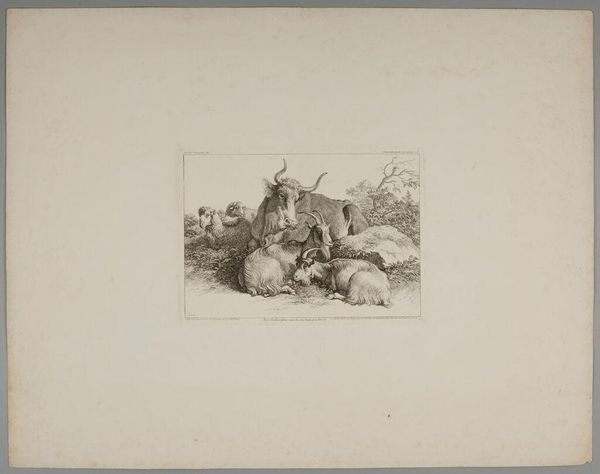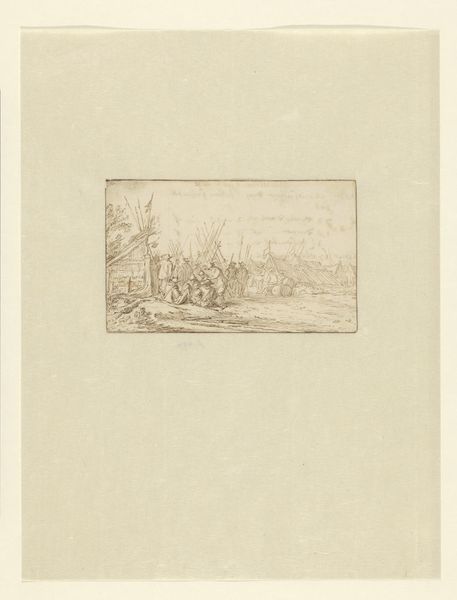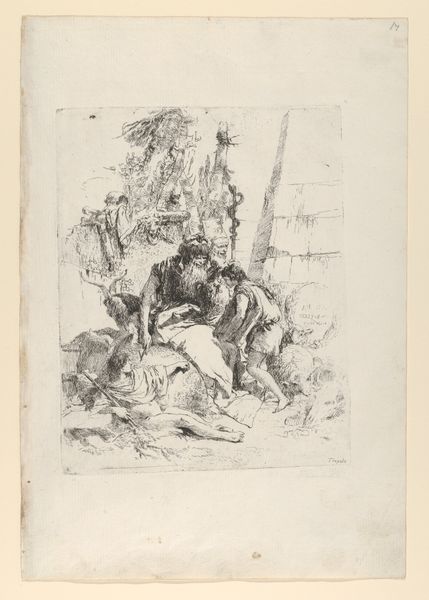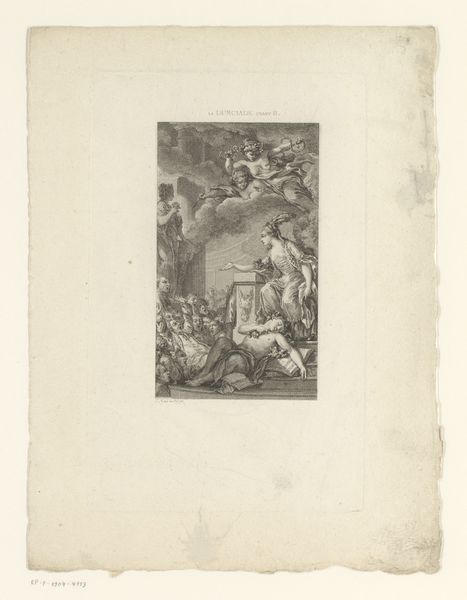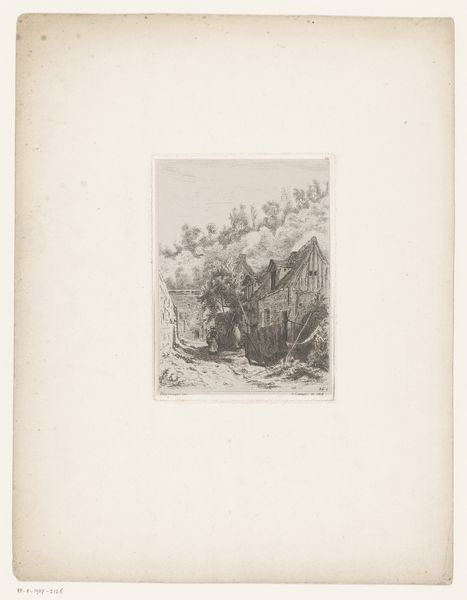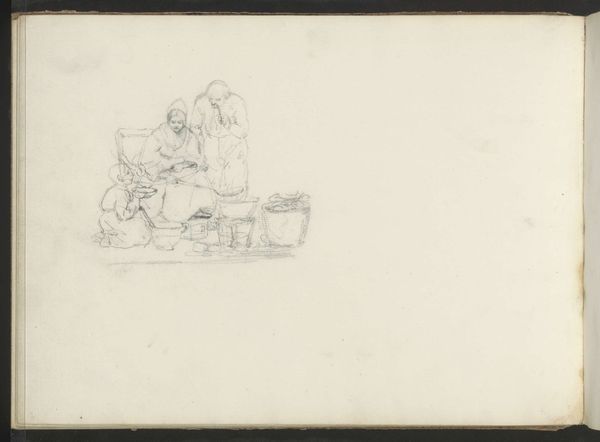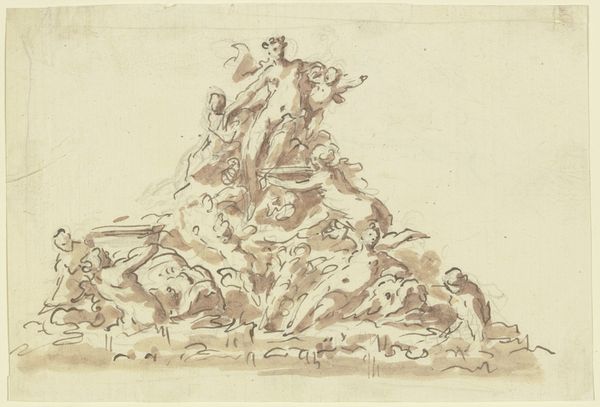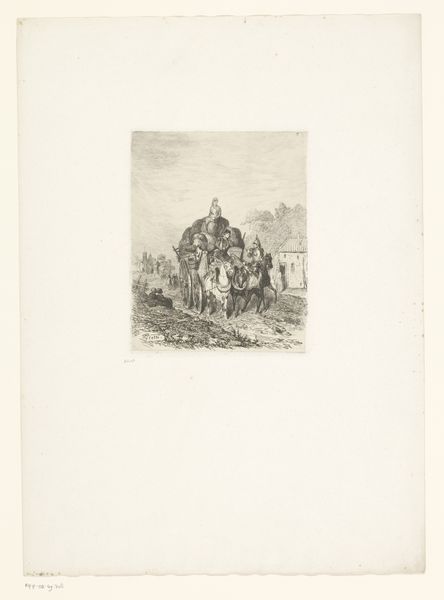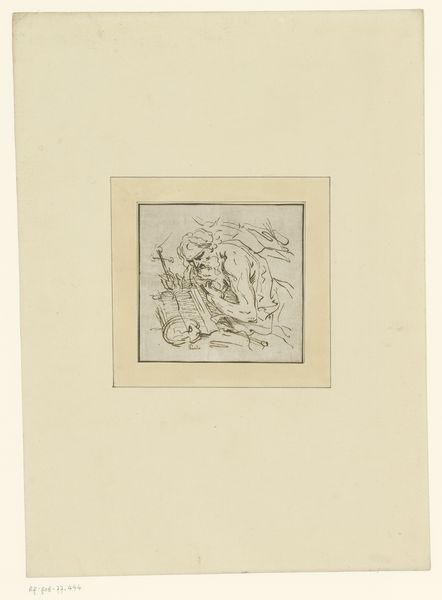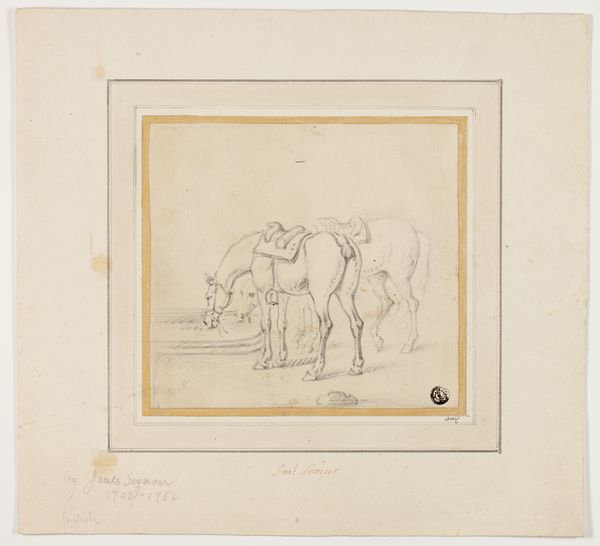
drawing, lithograph, print, etching, ink, graphite
#
drawing
#
lithograph
# print
#
etching
#
landscape
#
etching
#
ink
#
graphite
#
genre-painting
#
realism
Dimensions: 259 mm (height) x 173 mm (width) (bladmaal)
Curator: This is Adolph Kittendorff’s "Spædkalven", created around 1845. It's a lithograph, showcasing a small farmyard scene. Editor: It’s interesting. It's quite delicate. I am struck by the depiction of barnyard life—it feels both peaceful and a bit chaotic. The stark monochrome adds to that old, almost ghostly atmosphere. Curator: Lithography, being a relatively new printing method then, allowed for this kind of detailed replication and distribution, widening the audience for art beyond the elite. The choice to depict ordinary farm life—livestock squabbling over food—suggests a growing interest in genre painting and realism. Editor: Animals depicted here - chickens, a calf, pigs and ducks… it strikes me as an image loaded with symbols of sustenance and cycles of rural existence. Notice how each animal is rendered with distinct behaviors, perhaps embodying virtues or vices relevant to rural life: greed, domesticity, meekness. Curator: Absolutely. This touches upon the tension between idealized and actual portrayals of agricultural labor and life at the time. There is certainly nothing romantic about how the calf is drawn: seemingly vulnerable, caught amidst all the greedy jostling of other farmyard inhabitants competing for scarce food. Editor: Consider the cultural moment too; urban populations romanticizing rural innocence even while those rural areas were transforming from new demands and modes of agricultural production. It evokes this inherent contradiction of projecting ideal narratives onto rural laborers when their material experiences may have been extremely challenging and even dire. Curator: Right! Also, prints like these became more affordable due to advances in printmaking technologies and were important in the democratisation of art; circulating knowledge and taste more broadly within society. The very availability of the image speaks volumes about changes in material conditions and production during this period. Editor: Very true. Ultimately, seeing the image like that changes our perspective doesn’t it, considering all the details. It moves beyond a simply bucolic scene. Curator: Yes, it has shown the artwork offers so much insight in terms of understanding cultural priorities in material ways. Editor: Indeed. The artwork is surprisingly rich in its portrayal of societal shifts via such modest subjects.
Comments
No comments
Be the first to comment and join the conversation on the ultimate creative platform.
